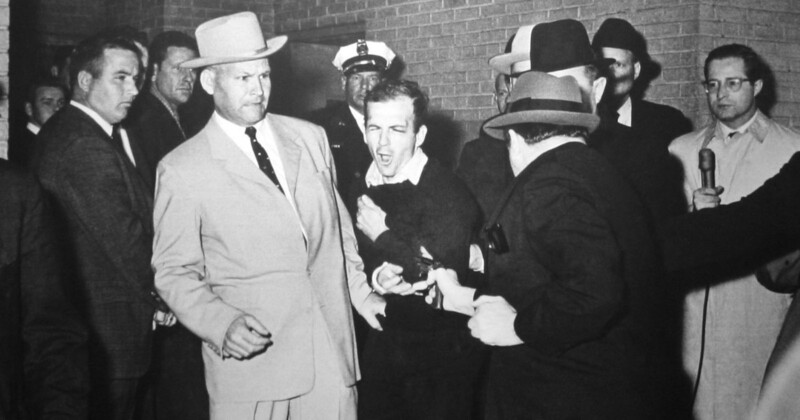Photographer Who Captured Murder of Lee Harvey Oswald Recalls Turbulent Few Days
News photographers yearn to capture an iconic image; so when Bob Jackson missed the opportunity to get a photo of President John F. Kennedy’s assassination because there was no film in his camera — perhaps he thought he had missed his golden opportunity.
However, just a few days later, Jackson would capture one of the most recognizable images of the 20th century with a photo that would also earn him the Pulitzer Prize for photography: The assassination of Lee Harvey Oswald — the man who killed JFK.

Jackson, who in 1963 was a photographer for the Dallas Times Herald, tells 9NEWS that he was “fired up” that weekend to do a good job on the big event of the President’s visit to Texas 60 years ago.
JFK Assassination
Jackson was riding in the fateful motorcade through Dallas seven cars behind the president and his wife Jackie Kennedy.
After shooting a roll of film, he had taken it out of his SLR camera to hand off to a reporter when he heard three shots ring out from the Dallas Book Depository Building and spotted two people.
“I saw the window ledge above them and there was a rifle resting on the ledge and he drew it in,” Jackson tells 9NEWS.
Every photographer knows the pain of losing a photo opportunity but is there anything comparable to missing one of history’s most significant events? Probably not. But of course, this being the days of analog it was far more likely to happen.
Murder of Lee Harvey Oswald
Two days after JFK’s demise, Jackson was sent to the police station to photograph Lee Harvey Oswald being transferred to county jail.
“I’m looking through the camera, I must have checked the wind-lever half a dozen times to make sure the film was wound,” says Jackson.
“Somebody’s stepping out from my right and this guy’s getting in my way and he shoots and I shoot.”
Jackson caught the exact moment the bullet from Jack Ruby’s gun struck Oswald, his face contorted in pain while Dallas police detective Jim Leavelle in a tan suit reacted to the attack.
Of course back then the photographer couldn’t just look at the back of the screen to see what they had caught, Jackson had to wait for the film to be developed until he could see what he’d got — when he saw it, he let out a yell of joy.
“I held the wet film up to the light and it looked really good — it looked sharp — but I couldn’t be sure how sharp it was until I got a magnifier,” he explains.
Jackson’s Pulitzer winning photo proved to be no fluke as he went on to have an illustrious photojournalism career, retiring in 1999.
“Every photographer would like to shoot an image that has meaning. I hated to see it happen in Dallas. But I was glad that I was able to cover a moment in history, in time,” he told KRDO in 2021.
Image credits: Bob Jackson/Wikimedia Commons